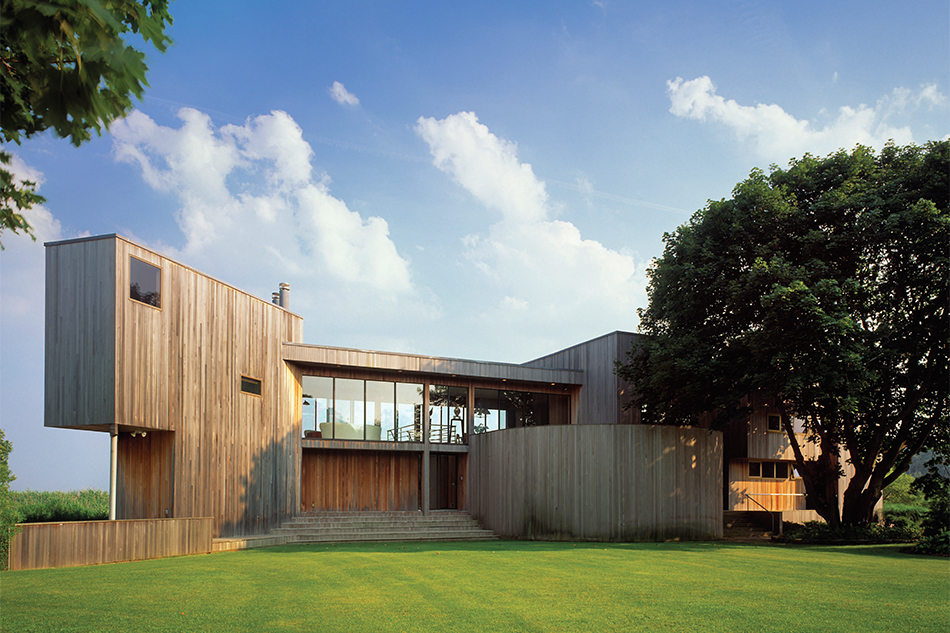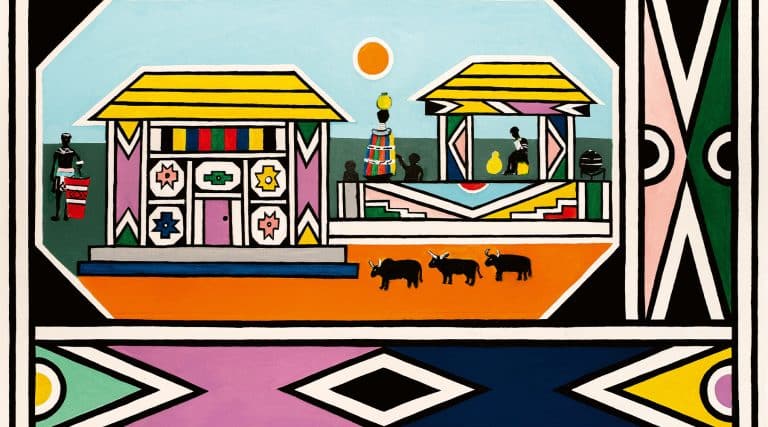
June 26, 2013A new book explores the architecture of Horace Gifford, whose modernist homes — including the Scali Guest House (1976) — transformed New York’s Fire Island in the 1960s and ’70s (photo by Michael Weber). Top: The architect’s Pilson House (1971) seems to spring from the dunes of Westhampton Beach (photo courtesy of Ed DiGuardia). All images courtesy of Metropolis Books
Sometimes a book comes along and sheds light on a subject that was hiding in plain sight. For me, Christopher Bascom Rawlins’s Fire Island Modernist: Horace Gifford and the Architecture of Seduction (Metropolis Books, $60) is such a book. I’ve been spending summers on Fire Island for a dozen years, and I have heard of Gifford from time to time; I’ve even been in a few of the houses he designed. But I never knew just how deeply he put his stamp on the look of the place, or how affecting his personal story was.
In the 1960s and ’70s, Gifford (1932–92) created 70 Fire Island houses, 40 of them in the nascent gay mecca of Fire Island Pines (he also did homes in the Hamptons and Florida). In this undeveloped, prime location, he saw an opportunity to get his designs built and he took it, achieving success at an age when most architects are still working out electrical plans and bathroom details at larger firms.
A handsome WASP from Vero Beach, Florida, Gifford revered the architects Paul Rudolph and Louis Kahn above all others. In 1958, after a brief stint working in New York, he chose Penn over Yale for graduate school, enabling him to study with Kahn. He dropped out after a semester, however, hightailing it back to Manhattan, like so many young gay men after him would. But living an openly gay life as early as the 1950s made Gifford a true outlier.
In the early ’60s, the Pines community was just developing as a destination on Fire Island, the narrow, 32-mile-long spit of sand off the southern coast of Long Island. Gifford took out a loan and built himself a house there, and soon everyone wanted one just like it. Though his style changed over the years, some things remained the same: construction in plain cedar, which weathered well (Rawlins notes that Gifford treated all surfaces like floors); relatively modest scale; the use of built-in furniture and sunken spaces; artful combinations of fairly plain volumes; and a devotion to bringing light and nature indoors. By the time Gifford designed his second home, he already had imitators.
“Horace Gifford’s stripped-bare creations in cedar and glass suited an upwardly mobile generation
that traded muumuus for muscles,
and mascara for mustaches.
His architecture was butch.”

The glass walls of the Pines’ Bonaguidi House II (1968) exemplify the at times voyeuristic tendencies of the community. Courtesy of Ed DiGuardia
Gifford was confident and brash: He would often wear a Speedo to client meetings in the Pines – perhaps the one place where you could (and still can) get away with such a uniform – and as the gay liberation movement of the 1970s really started to swing, his architecture changed to go with it. He took to adding so-called make-out lofts to his designs, and Rawlins notes that “as pretenses fell away, Gifford began to rotate glass walls into public view, fashioning voyeuristic vistas from within and without.”
The best architecture of the Pines today, including Gifford’s, is notable for its restraint, and Rawlins’s most interesting argument ties that to gay culture: “Horace Gifford’s stripped-bare creations in cedar and glass suited an upwardly mobile generation that traded muumuus for muscles, and mascara for mustaches. His architecture was butch.”
Ironically and sadly for Gifford, the Pines scene that he arguably helped create eventually got too wild for him, and then his architecture went out of style. He struggled with depression and at one point briefly moved to Houston. He designed very few houses in the 1980s, and he gave up the Pines entirely. He died of AIDS in 1992.
Rawlins has done a fine job unearthing Gifford’s story and explaining why he matters, with a few funny turns of phrase along the way: Who, after all, could find fault with the alliterative axiom “form follows foreplay?” Anyone going to a beach – any beach – this summer should pick up the book to at least flip through the photographs, which evoke Gifford’s obsession with, and gift for creating, architecture that profoundly relates to sand and sky. You can practically smell the salt air.








